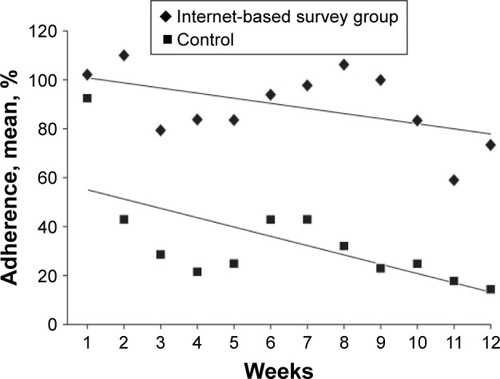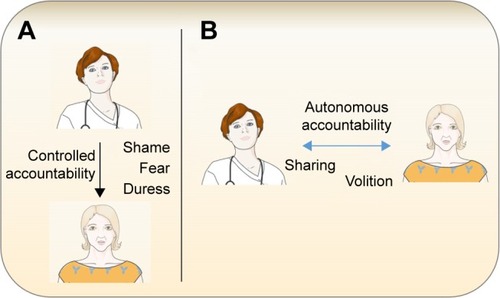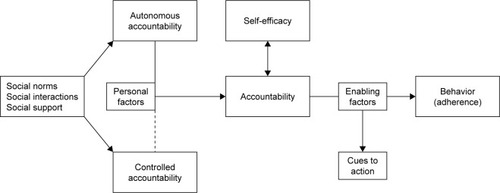Figures & data
Figure 1 The frequency of office visits in clinical trials greatly differs compared to those seen in practice.

Figure 2 The effect of accountability in medication adherence.

Figure 3 Autonomous accountability versus controlled accountability in clinical practice.

Figure 4 The inclusion of autonomous and controlled accountability in a modified version of Bandura’s Social Cognitive Theory.

Table 1 Testable accountability hypotheses
Table S1 Dominant health behavior models and their constructs
